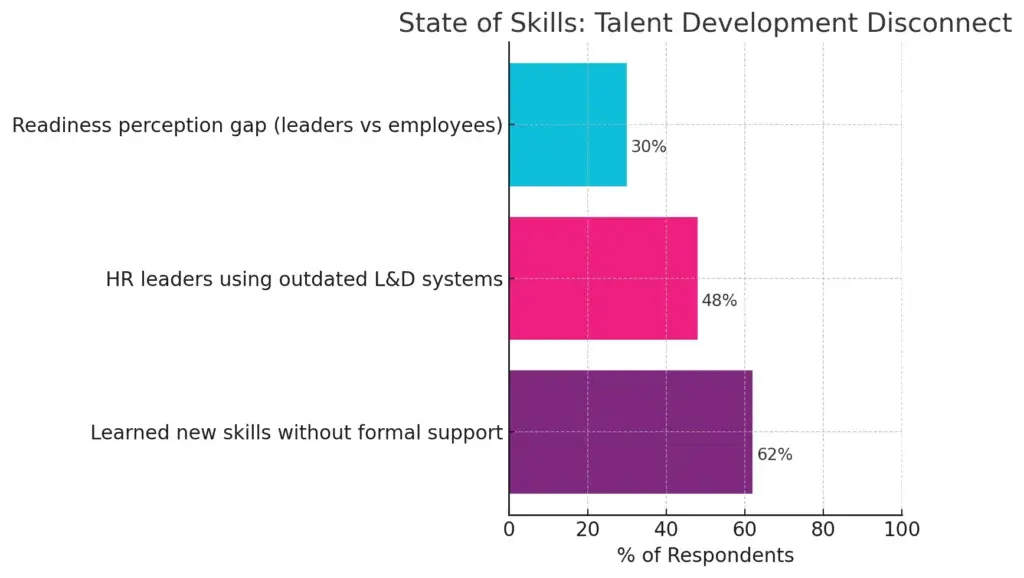June 2nd, 2025 – By Rebecca Taylor CCO and Co-founder of SkillCycle
Using AI to support talent development can create the illusion of progress without actually improving performance or engagement. While AI can surface data and automate tasks, it often fails to provide the personal, context-driven guidance that employees need to grow. Without a structured development system, AI may exacerbate existing inequities by enabling top performers to improve while leaving others behind.
Discover how Aida utilizes the power of AI to create personalized development plans that drive business outcomes.
Let’s Break it Down:
Many organizations are turning to AI tools to support performance management and learning systems. These tools promise efficiency, automated feedback, and personalized recommendations. But personalization without context can quickly become noise.
AI can identify what’s happening. It can’t always explain why or what to do about it. That’s a major risk when development becomes purely data-driven.
The “I’m fine, but everyone else is struggling” mindset is becoming more common. AI systems built around top-down data can reinforce this by showing leaders a clean dashboard that masks underlying uncertainty. When performance metrics look steady, it’s easy to miss the signs of burnout, disengagement, or quiet stagnation.
In short:
AI might tell you your team is performing.
Only human-centered development can tell you if they’re thriving.
You can’t scale development with templates and dashboards alone. And you can’t individualize it by relying on coaching for a few top performers. You need both.
A dimensional development model creates:
Real-time feedback loops connected to learning
Development plans tied to performance goals
Systems that adapt to individual and team needs
Coaching that meets employees where they are
SkillCycle offers a unified system that does this automatically, without adding more work for managers.
To move beyond “I’m fine,” organizations need tools that:
Turn feedback into action
Make learning personal and relevant
Align employee goals with company strategy
Deliver coaching and support at every level
SkillCycle makes this possible through a continuous improvement loop that integrates performance management, learning, and human guidance. Powered by AI, not defined by it.

According to SkillCycle’s 2025 State of Skills report:
62% of employees learned new skills last year without formal support
48% of HR leaders still rely on outdated L&D systems
There’s a 30% readiness perception gap between leaders and employees
This shows that employees are adapting. But many organizations haven’t caught up with how talent actually wants to grow.
AI alone can’t develop your people. It can support development, but only if it’s connected to a system that values human context, long-term growth, and personal alignment.
If you’re fine, it’s time to help your team become more than fine. That’s what development with dimension is all about.

Rebecca brings her years of experience in the HR and People space to SkillCycle as the first official employee and Co-founder. Throughout her 10 years in HR, she developed and spearheaded People strategies that made her companies successful and protected their most valuable asset – the people. Her goal is to empower people to invest in themselves and their teams, to increase employee engagement, retention, and performance.
Ready to move beyond “fine”?
See how SkillCycle connects performance, coaching, and personalized development into one system built for real growth.